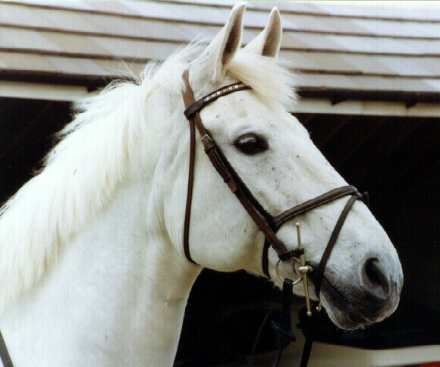Height: 16.2hh
Colour: Grey
Sex: Gelding
Breed: Dutch Warmblood
Sire: Marius
Grand-Sire: Marco Polo
Rider: John Whitaker
Owner: Mr and Mrs. Bradley
Milton was bought as a foal by young showjumper, Caroline Bradley. Caroline trained and rode Milton up until she tragically died. Her parents, in wanting to see their daughters horse succeed as she would have wanted him to, approached John Whitaker about riding their talented grey. It was with John Milton became what he was, a showjumping legend, partnering John from 1985 to 1994.
He was everyone's favorite and loved all over the world. The talented grey oozed presence. When he entered the ring crowds would raise the roof with their cheers. He is quite possibly the most famous and loved showjumper of all time. Milton passed away on Sunday the 4th of July and is buried at the Whitaker farm in Yorkshire where he lived since 1985.

Major Achievements
Milton was the first horse ever to accumulate winnings of over £1million.
Won team bronze and individual silver at the World Championships at Stockholm
Throughout his whole career he hardly ever knocked or refused a fence in his career.
Won FEI World Cups 1990 and 1991
team gold medals European Championships 1987 and 1989
Individual gold 1989 European Championships
Individual silver 1990 World Championships


0